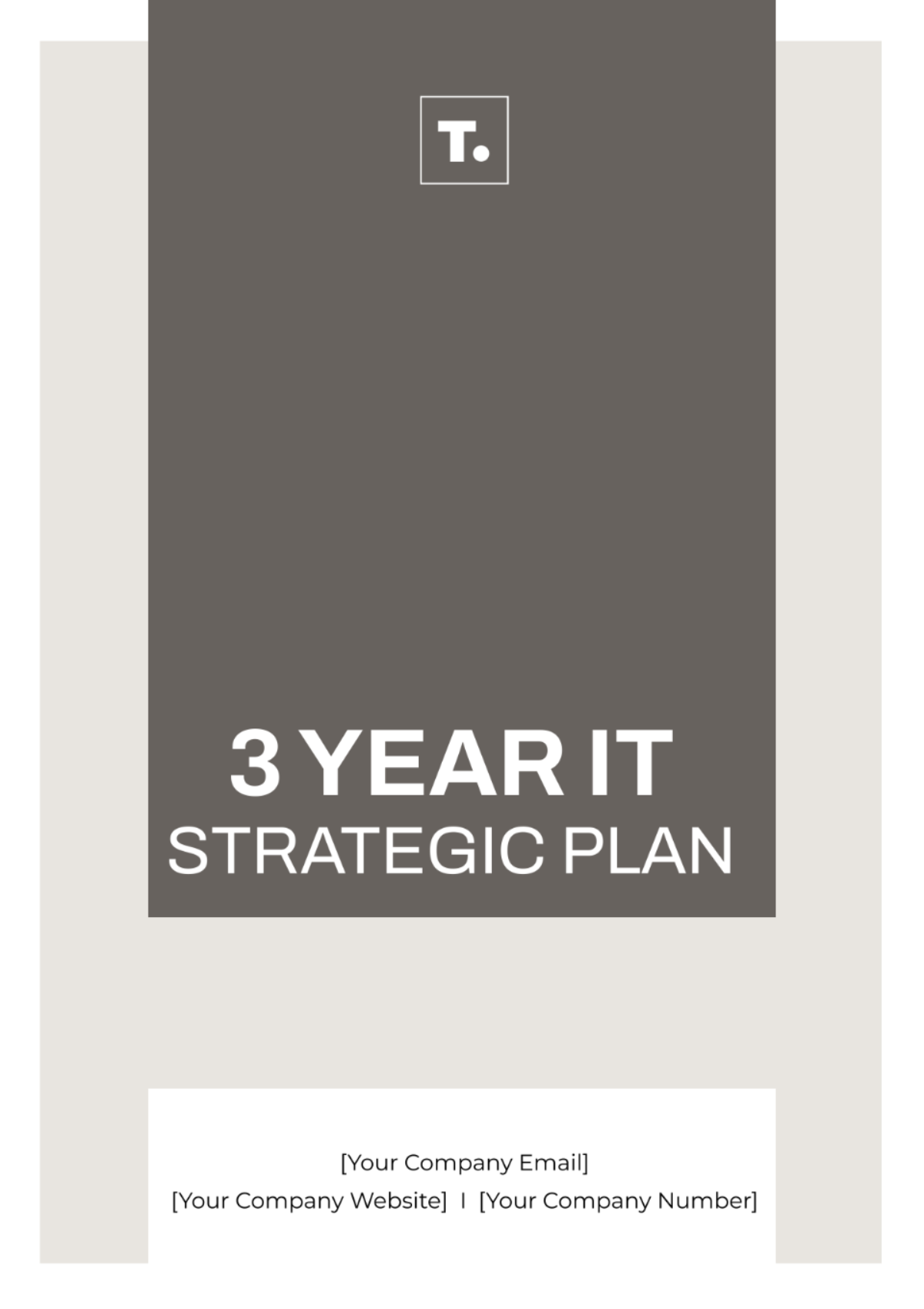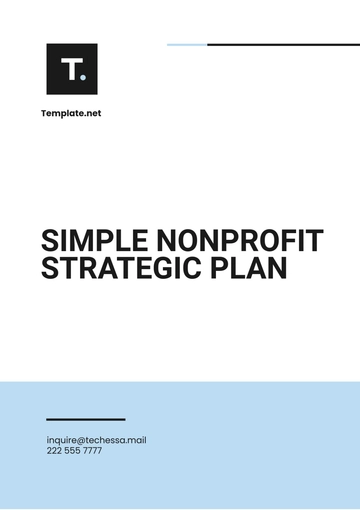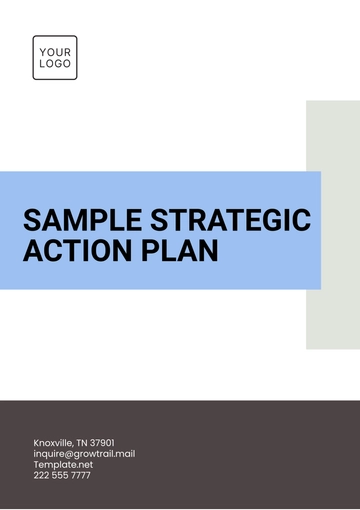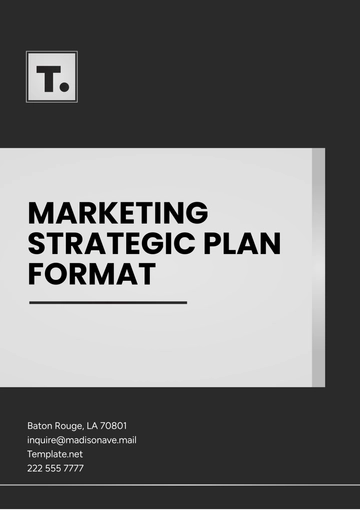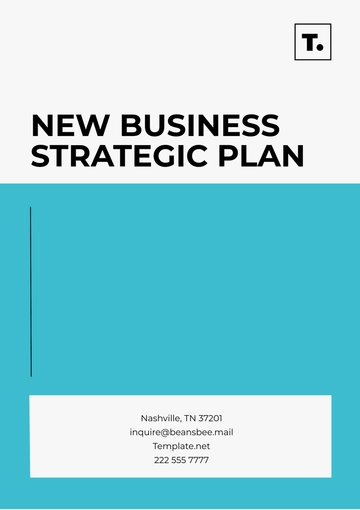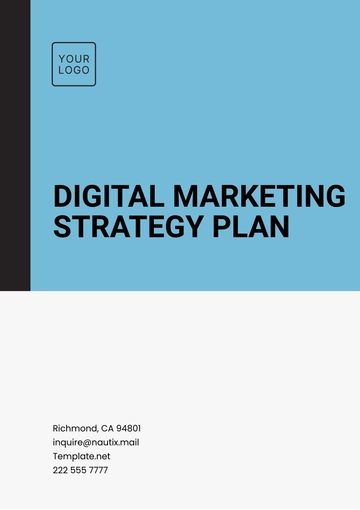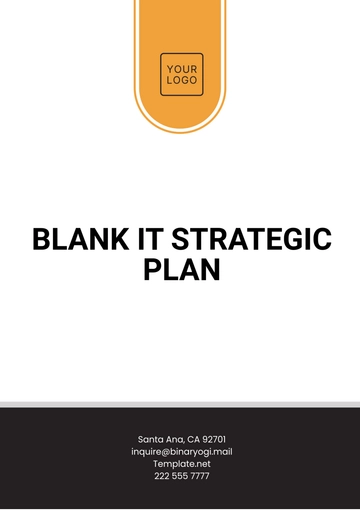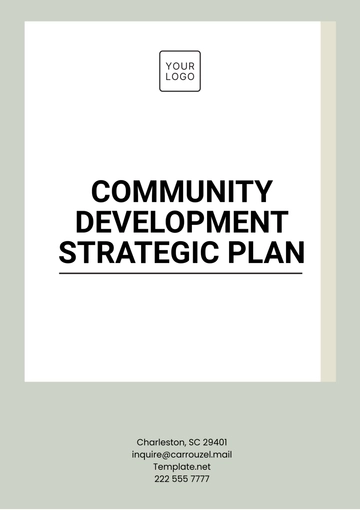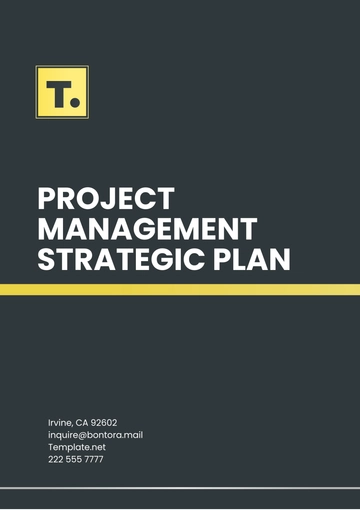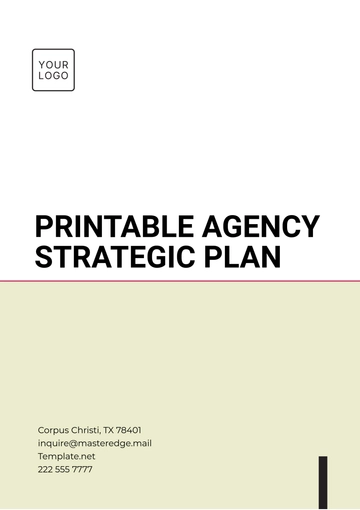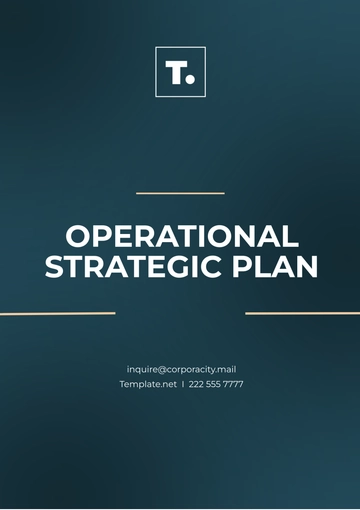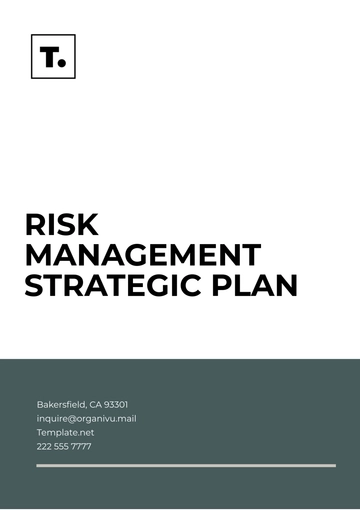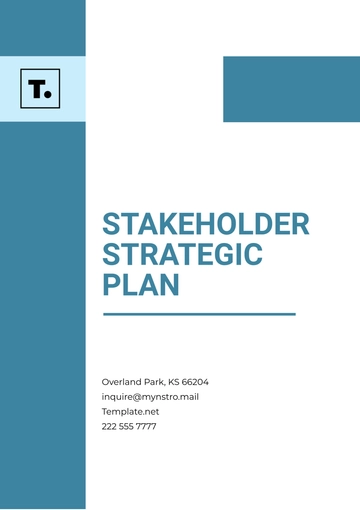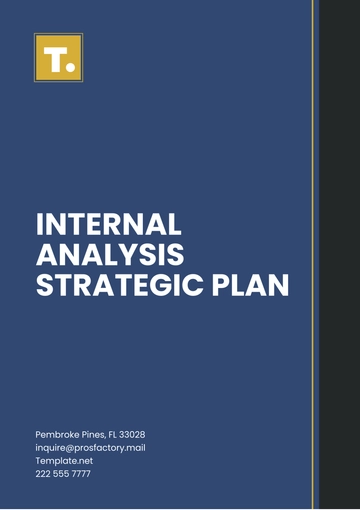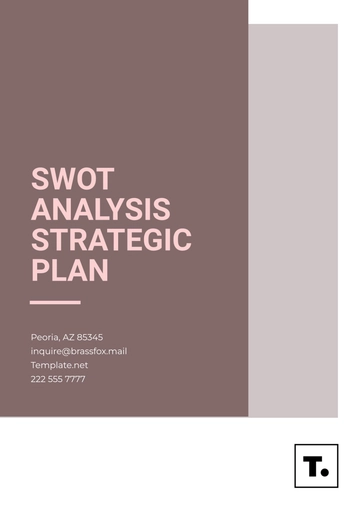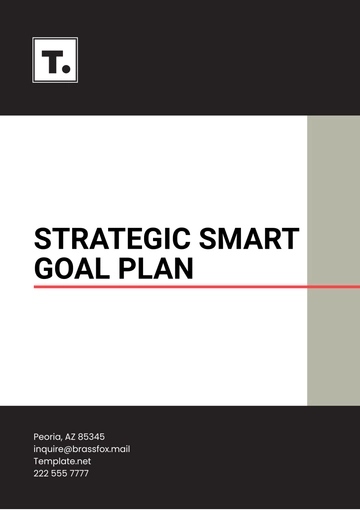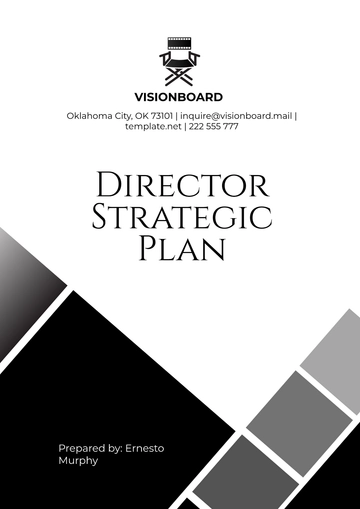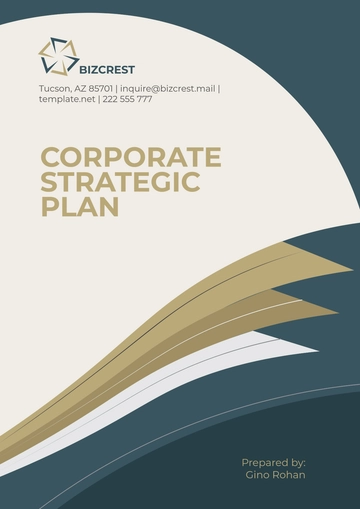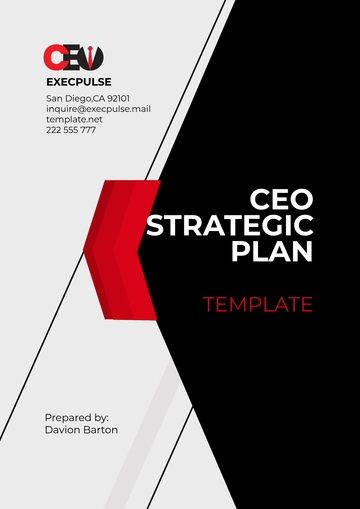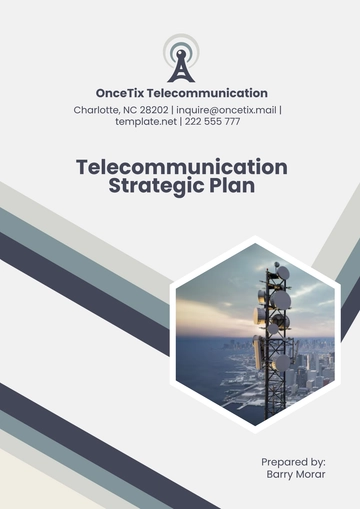3 Year IT Strategic Plan
NAME | IT COMPANY | DATE |
|---|
[YOUR NAME] | [YOUR COMPANY NAME] | [DATE] |
I. Executive Summary
As [YOUR COMPANY NAME] continues to expand its presence in the digital marketplace, the IT department is tasked with spearheading initiatives to enhance technology capabilities and drive innovation. Over the next three years, our strategic plan focuses on fortifying cybersecurity, modernizing infrastructure, and fostering a culture of innovation to achieve sustainable growth and competitive advantage.
II. Strategic Analysis
[YOUR COMPANY NAME]'s IT landscape presents a blend of strengths, weaknesses, opportunities, and threats that shape our strategic direction:
Strengths | |
Weaknesses | |
Opportunities | |
Threats | |
III. Vision and Mission
Vision: To be the forefront innovator in utilizing technology to drive business success and customer satisfaction.
Mission: To deliver secure, reliable, and innovative IT solutions empowering [YOUR COMPANY NAME] to achieve strategic objectives.
IV. Goals and Objectives
Goal 1: Enhance Cybersecurity
Goal 2: Modernize Infrastructure
Goal 3: Drive Innovation
V. Resource Allocation and Budgeting
Budget Overview
Allocation Summary:
Category | Year 1 Budget ($) | Year 2 Budget ($) | Year 3 Budget ($) |
|---|
Hardware | $500,000 | $550,000 | $600,000 |
Software | $300,000 | $325,000 | $350,000 |
Personnel | $700,000 | $750,000 | $800,000 |
Training | $50,000 | $55,000 | $60,000 |
Total | $1,550,000 | $1,680,000 | $1,810,000 |
Notes:
Budget allocations are based on current estimates and may be subject to change based on evolving needs and priorities.
Flexibility within each category allows for adjustments based on emerging requirements or unforeseen circumstances.
Prioritization Criteria
Factors Considered for Prioritization:
Alignment with Strategic Goals: Projects that directly contribute to the achievement of organizational objectives will be given higher priority.
ROI Potential: Projects with the potential for significant return on investment (ROI) will be prioritized to maximize value for the organization.
Urgency: Projects addressing critical needs or time-sensitive requirements will be prioritized accordingly to ensure timely implementation and impact.
Risk Management
Risk Mitigation Strategies:
Contingency Budget: A portion of the overall budget will be set aside as a contingency fund to address unexpected costs or budgetary risks.
Scenario Planning: Regular risk assessments will be conducted to identify potential challenges and develop proactive mitigation strategies.
Cross-Functional Collaboration: Close collaboration between IT, finance, and other relevant departments will facilitate swift response to emerging risks and challenges.
Contingency Budget Allocation:
Contingency Budget: $200,000 per year
Total Contingency Budget (3 Years): $600,000
Notes:
Contingency funds will be allocated based on identified risks and their potential impact on project timelines and budgets.
Regular monitoring and reassessment of risks will inform adjustments to contingency plans as needed.
VI. Implementation Plan
Timeline
Phase | Timeframe | Milestones and Deliverables |
|---|
Phase 1: Analysis | Month 1 - Month 3 | Conduct IT infrastructure audit Identify current strengths and weaknesses Gather input from stakeholders
|
Phase 2: Planning | Month 4 - Month 6 | Develop IT strategy and goals Define technology roadmap Allocate budget and resources for projects
|
Phase 3: Implementation | Month 7 - Month 24 | Upgrade network infrastructure Implement new cybersecurity measures Roll out new software systems and tools
|
Phase 4: Evaluation | Month 25 - Month 36 | |
Regular progress reviews will be conducted every quarter to ensure alignment with the timeline and objectives. Adjustments to the plan will be made as necessary based on these reviews.
Responsibilities
Role | Responsibilities |
|---|
Chief Information Officer (CIO) | Oversee the development and implementation of the IT strategic plan Ensure alignment with overall business objectives Allocate resources and budget effectively
|
IT Director/Managers | Lead specific phases of the IT strategic plan Manage IT personnel and resources Coordinate with other departments and stakeholders
|
IT Personnel | |
Stakeholders | Provide input and feedback during the planning phase Collaborate with the IT team to ensure alignment with departmental needs Participate in progress reviews and evaluations
|
Monitoring and Evaluation
Key performance indicators (KPIs) will be tracked regularly to ensure alignment with objectives and evaluate the effectiveness of implemented strategies. Some example KPIs include:
Percentage increase in network uptime
Reduction in cybersecurity incidents
User satisfaction with new software systems
Percentage of projects completed on schedule and within budget
Regular reports will be generated to track progress against these KPIs, and adjustments to the plan will be made based on the findings of these evaluations.
VII. Conclusion
The 3 Year IT Strategic Plan lays the groundwork for [YOUR COMPANY NAME]'s continued success in the digital era. By fortifying cybersecurity, modernizing infrastructure, and fostering innovation, we are poised to achieve sustainable growth and maintain our competitive edge.
Strategic Plan Templates @ Template.net
